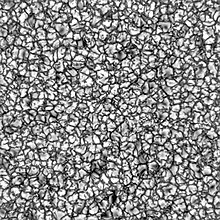Photosphere

The photosphere is a star's outer shell from which light is radiated. It extends into a star's surface until the plasma becomes opaque, equivalent to an optical depth of approximately 2⁄3,[1] or equivalently, a depth from which 50% of light will escape without being scattered.
A photosphere is the region of a luminous object, usually a star, that is transparent to photons of certain wavelengths.
Etymology
The term photosphere is derived from Ancient Greek roots, φῶς, φωτός/phos, photos meaning "light" and σφαῖρα/sphaira meaning "sphere", in reference to it being a spherical surface that is perceived to emit light.[citation needed]
Temperature
The surface of a star is defined to have a temperature given by the effective temperature in the Stefan–Boltzmann law. Stars, except neutron stars, have no solid or liquid surface.[note 1] Therefore, the photosphere is typically used to describe the Sun's or another star's visual surface.
Composition of the Sun
The Sun is composed primarily of the chemical elements hydrogen and helium; they account for 74.9% and 23.8%, respectively, of the mass of the Sun in the photosphere. All heavier elements, called metals in astronomy, account for less than 2% of the mass, with oxygen (roughly 1% of the Sun's mass), carbon (0.3%), neon (0.2%), and iron (0.2%) being the most abundant.
Sun
The
Photospheric phenomena
In the Sun's photosphere, the most ubiquitous phenomena are
Notes
References
- ^ Carroll, Bradley W. & Ostlie, Dale A. (1996). Modern Astrophysics. Addison-Wesley.
- S2CID 7297628.
- S2CID 119335130.
- S2CID 11877513.
- ^ a b John A. Eddy (1979). "SP-402 A New Sun: The Solar Results From Skylab". NASA. Archived from the original on 2004-11-18. Retrieved 2017-07-12.
- ^ "Sun Fact Sheet". nssdc.gsfc.nasa.gov. Retrieved 2023-08-27.
- ^ "Resolution B3 on recommended nominal conversion constants for selected solar and planetary properties" (PDF). 2014. Archived (PDF) from the original on 2016-01-28.
- ^ Stanford Solar Center (2008). "The Sun's Vital Statistics". Archived from the original on 2012-07-03. Retrieved 2018-02-20.
- ^ Burnett, Don. "Search for Origins". NASA. Retrieved 5 November 2023.
- ^ "The Photosphere". NASA. Retrieved 5 November 2023.
- ^ "Layers of the Sun". NASA. Retrieved 5 November 2023.
- ^ "NASA/Marshall Solar Physics". NASA. Archived from the original on 2016-02-05. Retrieved 2008-02-19.
External links
 Media related to Photosphere at Wikimedia Commons
Media related to Photosphere at Wikimedia Commons- Animated explanation of the Photosphere (University of South Wales).
- Animated explanation of the temperature of the Photosphere (University of South Wales).
- Solar Lower Atmosphere and Magnetism (MPS)
